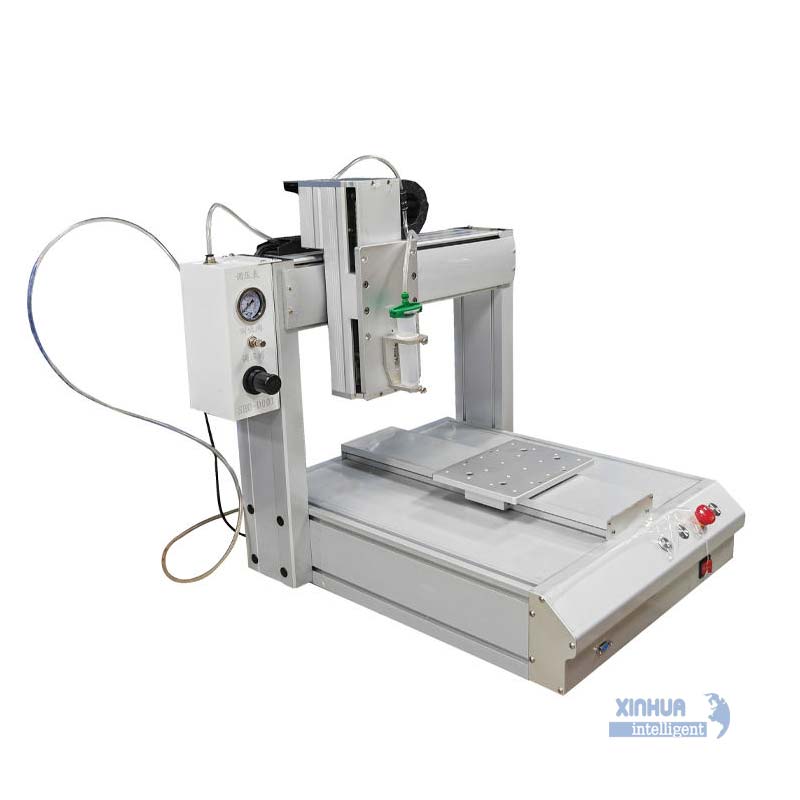Hot melt adhesive dispensing equipment works primarily through four core steps: heating and melting the solid adhesive, pressurizing and delivering the molten adhesive, precisely coating or dispensing it onto a surface, and then cooling and curing the adhesive to form a strong bond.
More specifically:
-
Heating and Melting: Solid adhesive materials (in strips, pellets, or blocks) are added to a heating chamber where an electric heating element melts the glue at controlled temperatures (usually around 120℃ to 180℃). Precise temperature control ensures the adhesive fluidity is stable and prevents degradation or carbonization.
-
Pressure Delivery: The molten adhesive is pressurized using gear pumps, piston pumps, or air pressure systems to extrude it through nozzles or dispensing valves. The pressure and flow are adjusted based on the adhesive viscosity and the application needs, with filtration systems reducing nozzle clogging.
-
Precision Coating/Dispensing: Robotic motion control or programmed path systems guide the nozzle to apply the adhesive in specific patterns—dots, lines, arcs, etc.—with micron-level accuracy. The dispensing is timed very precisely (down to milliseconds) to control the volume and ensure consistent application.
-
Cooling and Curing: Once dispensed, the adhesive quickly cools upon exposure to air or the substrate surface and solidifies, forming a durable bond. The open time (time allowed before curing completes) is matched to dispensing speed, typically a few seconds to tens of seconds.

This process allows for efficient automated bonding without drying time, no VOC emissions, and compatibility with a variety of materials including wood, plastic, metal, and textiles.
Additional technical features often include segmented heating zones, temperature monitoring, high-precision pressure regulation, and multi-axis robotic movement for complex deposition patterns. The equipment can range from small modules for precision electronics assembly to large floor-standing systems for industrial-scale production.
